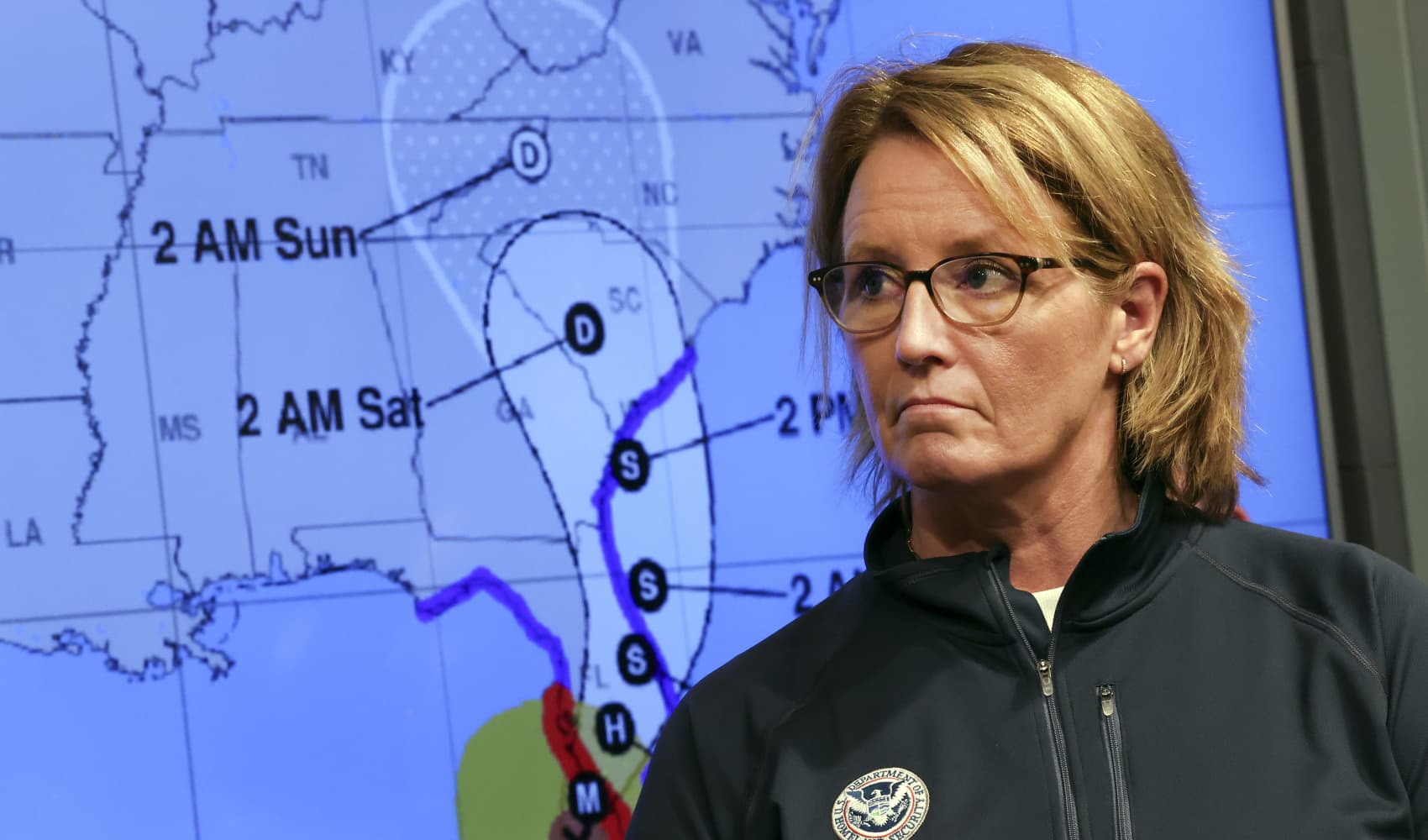
- Some local governments in California are beginning to take action on homelessness following a Supreme Court ruling in June.
- Cities now have the ability to enforce fines and make arrests for public camping and sleeping outdoors.
- More than 181,000 people were homeless in the state in 2023, accounting for nearly one-third of the country's unhoused population.
Across California, homeless encampments on city streets, in public parks and beneath highways have become among the most visible symbols of the state's overwhelming challenges with affordable housing. Government officials are now using their newfound power to take on the problem.
In late June, the U.S. Supreme Court ruled 6-3, with the conservative majority voting together, that cities are allowed to enforce fines and make arrests for public camping and sleeping outdoors, and to threaten jail time for those who repeatedly refuse to move indoors and accept assistance.
The decision overturned a 2022 ruling by an appeals court, which favored a group of homeless people in the small Oregon city of Grants Pass.
After the decision, California Governor Gavin Newsom applauded the clarity outlined in the ruling and put out an executive order in July pushing local governments to "develop their own policies to address encampments with compassion, care, and urgency."

Get Tri-state area news delivered to your inbox. Sign up for NBC New York's News Headlines newsletter.
The order included guidance for cities and counties in a state that had more than 181,000 homeless people in 2023. Newsom said in a statement in June that the court's decision "removes the legal ambiguities that have tied the hands of local officials for years and limited their ability to deliver on common-sense measures to protect the safety and well-being of our communities."
Money Report
On Tuesday, Newsom signed two new laws. One will make it easier for service providers to place unhoused people into privately owned hotels and motels for more than 30 days, and the other speeds up the process for local governments to construct junior accessory dwelling units for shelter.
California accounted for nearly one-third of the country's unhoused population last year, according to data from the U.S. Department of Housing and Urban Development. Over the past five years, the state has invested $27 billion to address the homelessness crisis, including $1 billion in encampment resolution funds.
San Francisco Mayor London Breed, who's in the midst of a tight reelection campaign, has responded to the executive order with sweeps to clear encampments, and offered bus tickets out of town. Breed's order cited data from this year's Point-in-Time Count, which found that 40% of the homeless population in the city came from elsewhere in California or from out of state, up from 28% in 2019.

Breed's challengers, including Levi Strauss heir Daniel Lurie and former interim Mayor Mark Farrell, have told CNBC about the need to increase safety on the streets and move away from public camping. Lurie said he would plan to build 1,500 shelter beds in his first six months of office. Farrell has called for an increase in police enforcement in areas struggling with both drugs and homelessness, and increased incentives for small businesses and affordable housing.
'Real kick in the gut'
The changing approach has its share of critics.
Los Angeles Mayor Karen Bass said the Supreme Court ruling "must not be used as an excuse for cities across the country to attempt to arrest their way out of this problem or hide the homelessness crisis in neighboring cities or in jail."
Bass has publicly called for more housing and shelter beds for homeless individuals, coupled with supportive services, and said that criminalizing the actions or trying to push them away "is more expensive for taxpayers than actually solving the problem."
Jennifer Friedenbach, executive director of the San Francisco-based Coalition on Homelessness, called the ruling "a real kick in the gut."
Her group's goal is to seek permanent solutions for homelessness via advocacy and ballot measures. Prior to the Supreme Court decision, unhoused public campers couldn't be fined without the offer of shelter.
"This [was] a protection that at the very least there would be some attempt that the local municipalities had to do to try to offer them someplace to sleep," Friedenbach said. "They literally have nowhere to go so when these operations happen, the [sweeps] typically exasperate homelessness and make it worse."
Breed and Bass have both advocated for more access to affordable housing and shelter. In 2022, the California Department of Housing and Community Development found that by 2030, at least 2.5 million new homes need to be built, with at least 1 million of those going to lower-income families.

Inaction has broad economic repercussions. The National Alliance to End Homelessness found in 2017 that a chronically homeless person costs the taxpayer an average of $35,578 per year, costs that are reduced by nearly half when the person is placed in supportive housing.
One solution is more interim housing, said Adrian Covert, senior vice president of public policy at the nonprofit Bay Area Council.
"We know that we cannot build permanent housing in California faster than the rate at which our broken housing market is creating homeless people through our housing shortage," Covert told CNBC. "You have to have someplace for them to go so they don't endure that trauma on the street. And that's where interim housing comes into play."
WATCH: California responds to Supreme Court ruling on encampments






